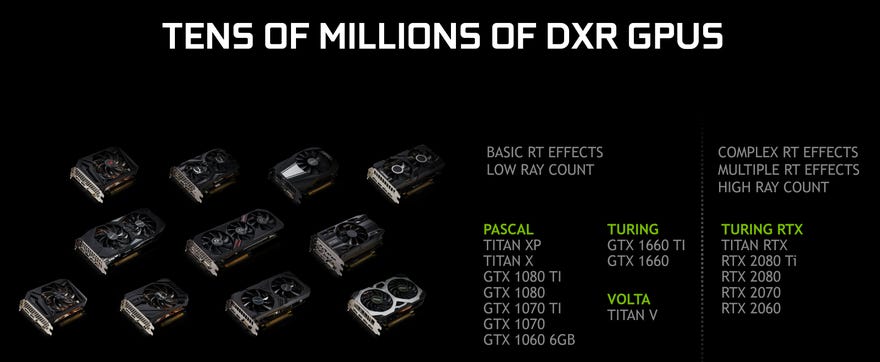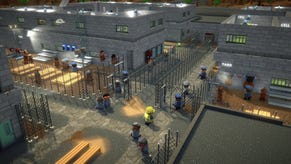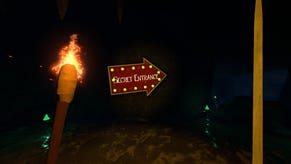Nvidia are bringing DirectX ray tracing to GTX graphics cards, starting with the 6GB GTX 1060
Yes, you read that correctly.
Yes, you read that correctly. Nvidia have announced they're going to enable DirectX ray tracing (or DXR for short) on GeForce GTX 10-series graphics cards, starting with the 6GB GTX 1060 next month. The update will come via a new Game Ready Driver expected sometime in April, and the hope is that it will finally give developers the shot in the arm they so desperately need in order to get more ray tracing-enabled games into our hungry, reflection-obsessed mitts - regardless of whether you have an RTX graphics card or not.
Now before new RTX owners start moaning about having wasted their money on a brand new graphics card just to take advantage of all the cool RTX features they come with, such as real-time ray tracing and DLSS, it's worth pointing out that these cards are still far better equipped to do all that stuff than their GTX 10-series siblings. That's largely because every RTX card has dedicated RT Cores inside its Turing GPU that have been specifically designed to handle ray tracing applications at high speeds and, more importantly, high resolutions.
Newly DXR-enabled GTX cards, however, will only be able to ray trace at "lower RT quality settings and resolutions", according to Nvidia. Admittedly, it's not entirely clear what that means in practice at the moment, but it probably goes without saying that attempting to ray trace on higher quality settings will likely cause your GTX cards to weep big, perfectly reflective tears.
Indeed, one thing Nvidia have said is that their RTX cards will be able to get up to 2-3x faster DXR performance thanks to those aforementioned RT Cores. Just look at this graph below showing a single frame of Metro Exodus gameplay and all the extra work the GTX 1080 Ti is doing compared to the RTX 2080 - both with and without the use of its RT Cores (click to expand). Add in Metro Exodus' DLSS support, and other graphs in Nvidia's news post show you'll get a frame rate that's three times faster on the RTX 2080 than the GTX 1080 Ti on Ultra settings at 1440p, taking it to just above 60fps compared to the 1080 Ti's 20fps performance.
In Shadow of the Tomb Raider, the RTX 2080 will be twice as fast as the GTX 1080 Ti on the equivalent settings at 1440p, offering 60fps speeds instead of 30fps, and in Battlefield V it will be 1.6x faster, boosting the 1080 Ti's frame rate of 45fps up closer to 80fps on its RTX sibling.
What I'm particularly keen to find out, however, is what their newly-launched GTX 1660 and GTX 1660 Ti graphics cards are capable of, for while they don't have the same dedicated RT Cores like their RTX cousins, I'd imagine their Turing GPUs will be a lot quicker at processing all that DXR data than their Pascal predecessors. Only time will tell.
Still, while I'm sure Nvidia would much rather you buy one of their infinitely more capable RTX cards for proper ray tracing performance, it's promising news nonetheless for the ray tracing skeptics out there who might want to see what the fuss is all about first before taking the plunge and spending a load of cash on upgrading their graphics card. What's more, Nvidia have also confirmed the driver update will be enabled on equivalent GTX 10 and RTX 20-series laptops as well - i.e: 6GB GTX 1060 laptops and above - allowing you to take your love of ray tracing on the move wherever you go.
Of course, I'll be testing how it all works and what kind of performance you can expect from your GTX GPUs as soon as the driver lands next month, so watch this space for more details.










